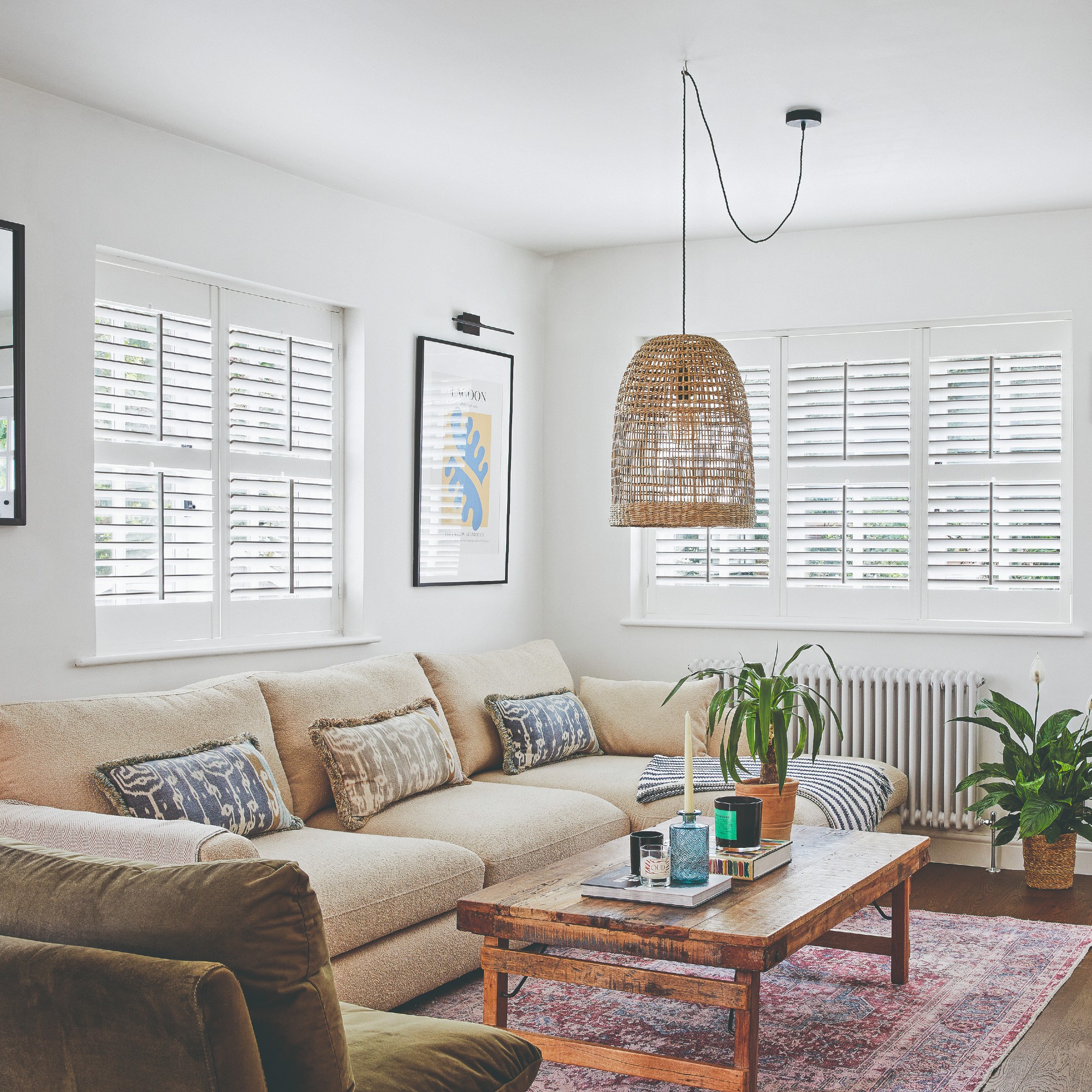
The main challenge of a small living room, besides the obvious lack of space, is having to be smart with your furniture picks and arrangements. Because there are definitely the right ways to arrange furniture in a small living room, just like there are wrong ways.
If you go for disproportionately sized pieces of furniture, you could end up with a cluttered look and if you wrongly position certain furniture, the end result of your living space could feel and appear cramped. And that’s not a good small living room idea for anyone.
That’s why we asked several interior experts to give us their tips on how to create a well-balanced small living room with the help of correctly arranging the furniture. And this is what they had to say.
How to arrange furniture in a small living room
‘If your living room is on the smaller side, choosing furniture that’s the correct size and arrangement can ensure a room doesn’t feel cluttered and overwhelmed,’ confirms Victoria Foster, interior stylist at ScS.
And not only that, some of these tricks can also make a small living room look bigger than it actually is.
1. Space out your furniture
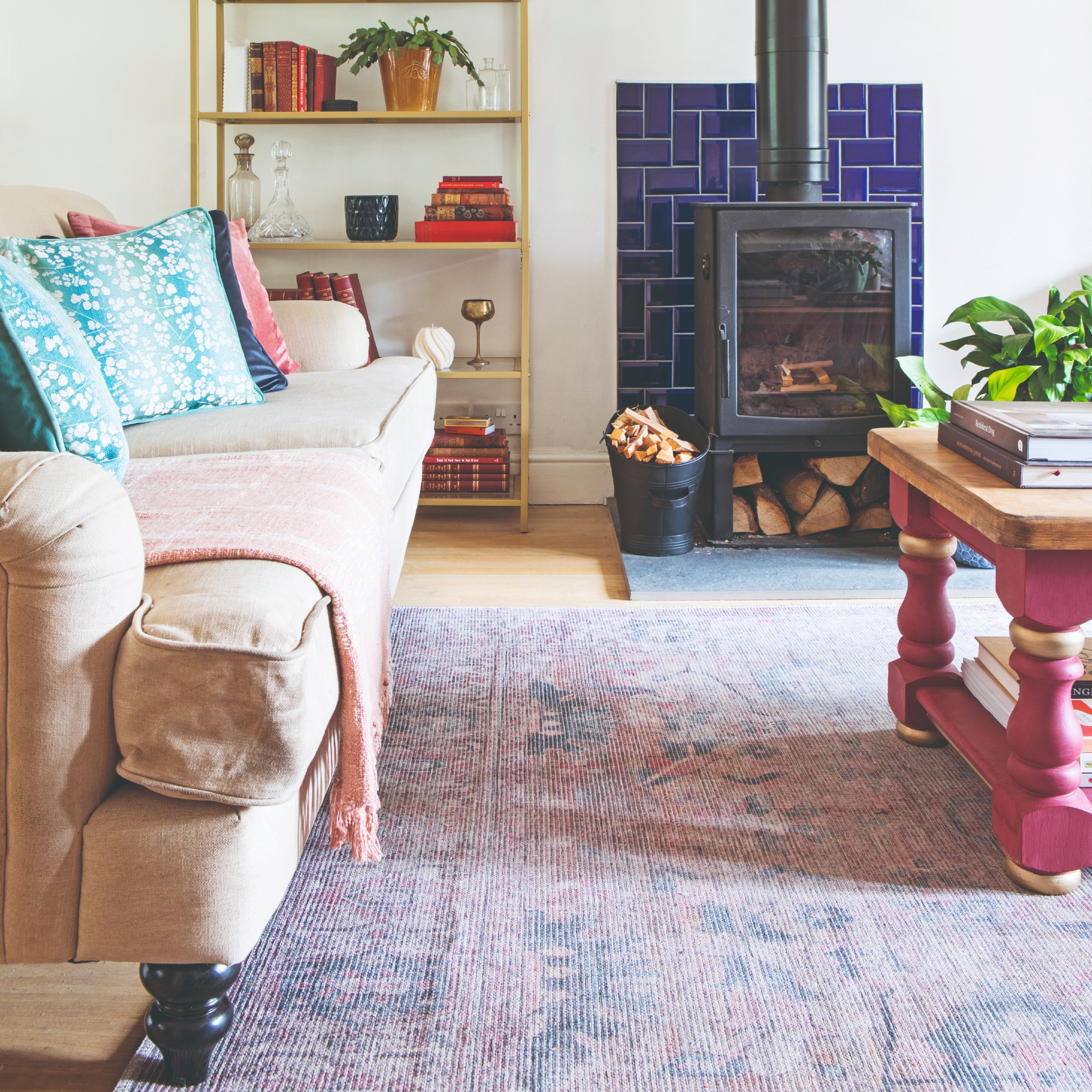
Even though you are working with limited space, you should still aim to give each piece of furniture enough ‘personal’ space so to speak – if the individual pieces are too close together, that will ultimately result in a cluttered look. There is an ideal distance of how much space you should create between a sofa and a coffee table and other pieces of living room furniture that interior designers and stylists use.
‘Furniture should have space to breathe, placing items too close together can result in a cramped feeling space and draw attention to the size of the room,’ Victoria warns.
Ali Edwards, head of design at MADE, adds, ‘Keeping the room as open as possible is key by focussing on how you will use and walk around within the space - ensuring the layout does not make you feel "penned in" and is a relaxing and enjoyable space.'
2. Create storage behind the sofa

Incorporating enough living room storage ideas in a small space is key to preventing the room from looking cluttered. And one such way to incorporate extra storage is by putting a console table behind a sofa, ideally one without drawers (because you won’t be able to open them from behind the sofa) and with an extra bottom shelf to store items you don’t regularly use.
‘If you have the space, pulling your sofa away from the wall and placing a narrow unit behind it works perfectly to provide some extra storage without adding visible clutter,’ Victoria recommends.
At £50, this is one of the best priced console tables we've seen. And we also love those curves.
If you prefer a natural wooden finish over black metal, then this is one of the best designs youy could go for when it comers to behind-the-sofa storage. The bottom shelf can be reserved for storing bulky items you don't often use and the top can act as a plant display.
If you're a minimalist at heart and in your home decor, then this sleek console table design is perfect for you. Made with black matte-finish steel, this La Redoute design is not only stylish but also practical and very stable.
3. Make sure seating has a view of a window

When it comes to making a small space look larger, it’s all about optical illusion. And small living rooms are no exception. One easy way to exercise this is by positioning any sofas and chairs to have a clear view out of the window.
‘If you can, try to make sure all sofas and armchairs have a clear view of the window, this way when you’re sitting down the space naturally feels bigger because you are able to see open space outside, this also creates a sense of the room being brighter as that is where your focus is when you’re sat down,’ Victoria says.
4. Utilise vertical space
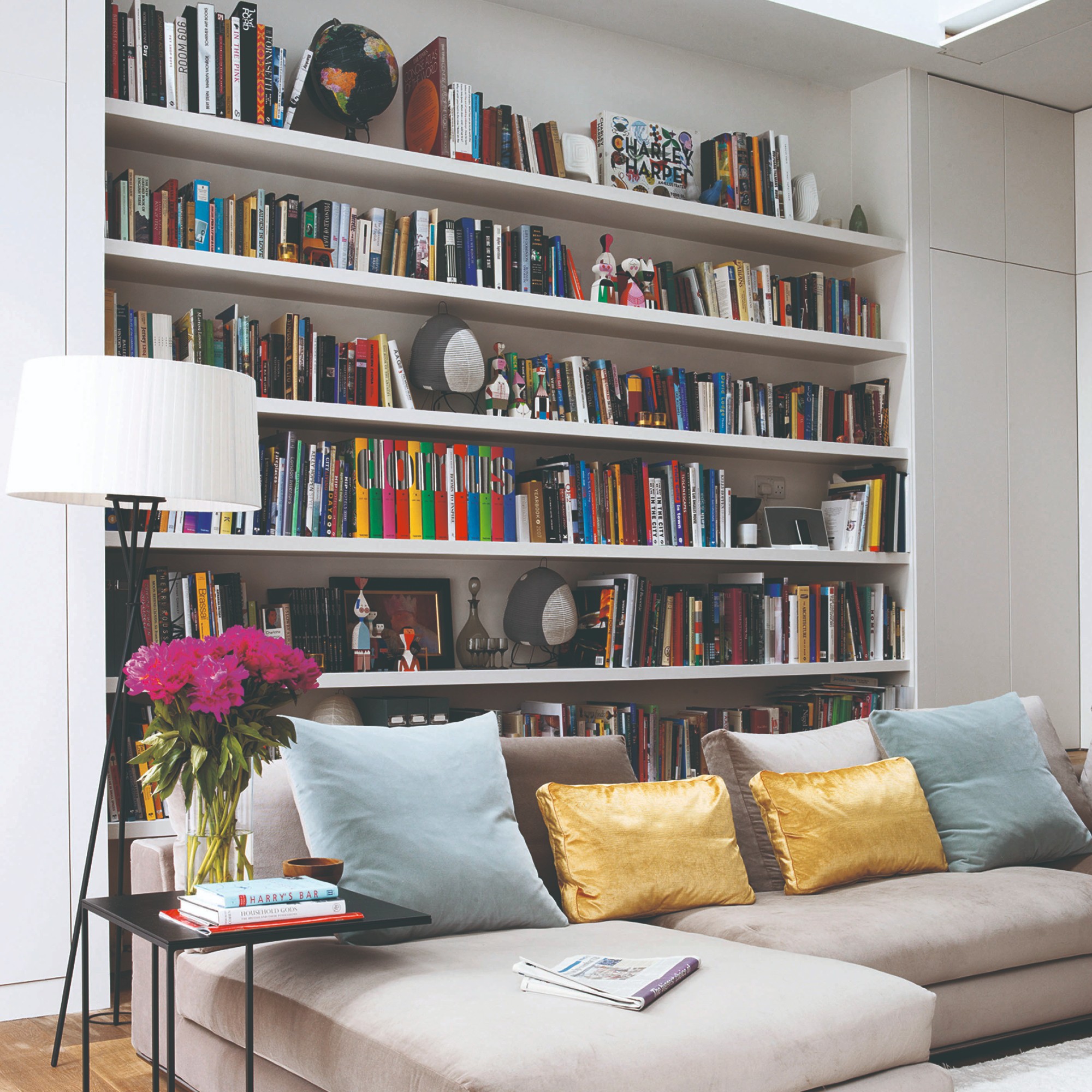
If there’s not enough floor space for you to play with, then consider filling the often under-utilised vertical space of the room.
‘Look for furniture that takes advantage of height – using taller cabinets and adding plants etc up high to bring interest further up the room,’ Ali from MADE says.
Victoria continues, ‘“A really simple solution to a lack of floor space is to look upwards, utilising vertical space. Opt for tall and narrow storage units and furniture with doors to hide away any clutter. For a small living room, I would tend to avoid wide sideboards as they take up a significant amount of space and require a clear area in front of them to open the doors. Instead, choose tall shelving or a taller, but narrow unit.’
Similarly, one of the best small living room TV ideas is to mount it onto the wall. ‘Place items like the TV and shelving on the walls rather than taking up floor space. Tall furniture, like bookcases or storage units draw the eye upward, making the room feel taller,’ says Lucy Mather, interiors expert from Arighi Bianchi.
5. Opt for multifunctional furniture

Just like you need to be all the smarter when decorating a small living room, the furniture you put in it has to work twice as hard than a spacious living space. So opting for multipurpose pieces is best for small living room arrangements.
‘To maximise space in a small room, try including pieces of multifunctional furniture that provide extra storage,’ says Lena Gierasinska, head of product and displays at Barker and Stonehouse. ‘For example, an ottoman or a coffee table that has built-in storage.’
Lucy adds, ‘A practical option is choosing furniture that serves multiple purposes, such as a sofa bed or an ottoman with storage, and furniture with built-in storage, like a coffee table with drawers, helps keep the room tidy.’
Dunelm's Beatrice snuggle chair has become so popular that the brand has since launched several coordinating pieces, including this ottoman which can be used as extra seating, a footstool, a coffee table and it's a clever storage solution.
Few sofa designs work as hard as this affordable Habitat design. It comes with hidden storage and high ratings from existing customers. And it's also one of the best sofa beds!
Don't forget about the coffee table when thinking about living room storage. One with hidden storage or drawers like this chic M&S design is best.
6. Keep it symmetrical

One of the easiest ways for how to arrange furniture in a small living room is to opt for a symmetrical layout with two sofas (or a sofa and two chairs) positioned facing each other. Often used by interior designers, a symmetrical layout works well in rooms big or small, creating a sociable set-up with sofa ideas for small living rooms opposite each other for easier conversation.
A symmetrical layout also works well in living rooms where the entrance is across from a fireplace. Having seating positioned centrally guides visitors to walk around (rather than through) the space and helps keep the sense of flow. Other items of furniture can be pushed back against walls and the TV set either side of the fireplace.
‘The balance of two sofas facing each other, or even a sofa and two armchairs, will always be visually appealing,’ says Charlie Marshall, founder of Loaf. ‘If it’s a corner sofa or chaise, create balance with a coffee table or storage footstool and armchair to one side, which will add weight. The trick is not to group too much furniture in one area.’
7. Ditch the three-piece suite
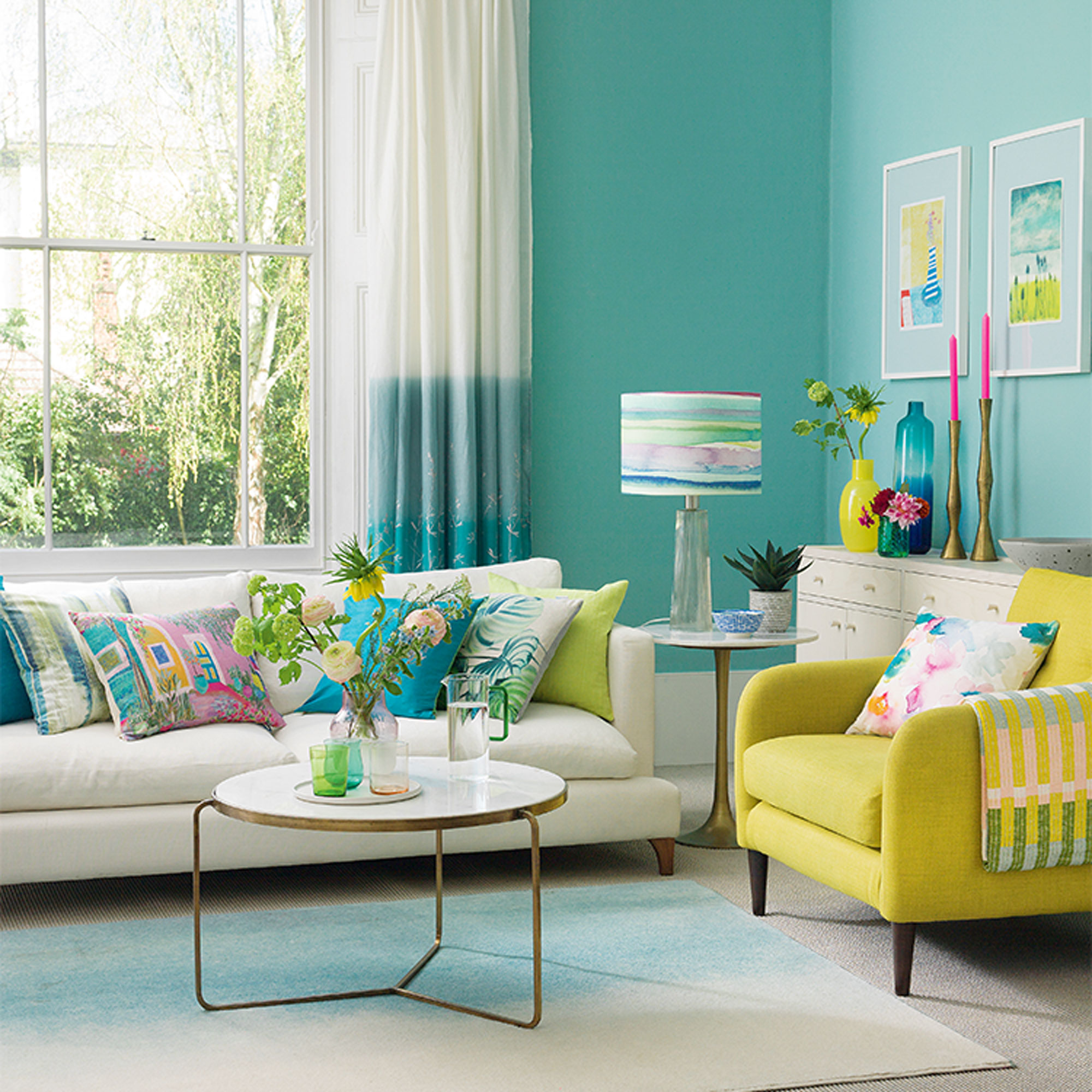
While the classic three-piece-suite will always have its place, if living room space is tight, re-thinking the traditional set-up of sofa and a pair of matching armchairs could be the solution.
Perhaps an extra-long sofa with a single chair might be a better fit, or maybe a couple of cuddler-style two seaters might be more practical for your living room sofa idea. Or consider getting rid of the sofa completely and opting for a mix-and-match combination of easy chairs and ottomans - footstools and pouffes are easy to move around and can double up as side tables too.
8. Anchor the room around a rug

A large rug can be a useful device when it comes to how to arrange furniture in a small living room, especially if you have a collection of furniture that feels a little mismatched because you're working with budget living room ideas.
Opt for a generously-sized rug, positioned centrally in the room, so that it pretty much fills the floor space. Arrange the sofa and chairs with the rug as the anchor point, with legs half-on and half-off. It will help connect the furniture visually and make the whole room feel less disjointed.
9. Keep furniture in proportion
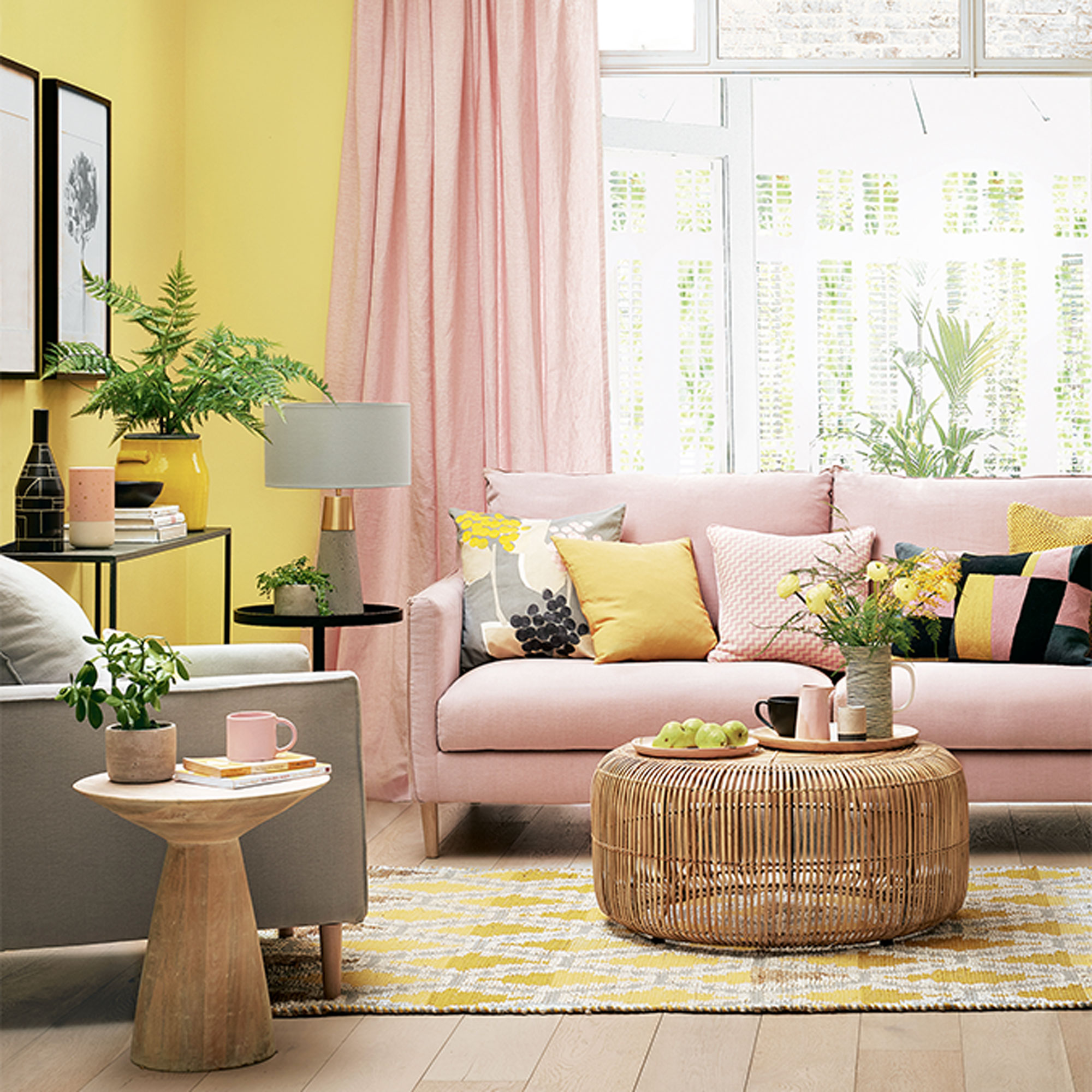
While clearing a tiny space of any excess items is a great way of making it feel more spacious, there’s only a certain amount of ‘stuff’ that you can do without. If you’ve pared everything back to just the essentials, then look at ways of making what you have feel more streamlined and more in line with modern small living room ideas.
Chunky sofas and armchairs with overstuffed upholstery, high backs and scrolled or thick-set arms can feel quite hefty and bulky and tend to dominate a small space. Instead, opt for tailored designs and leaner-looking pieces that are better proportioned to the size of the room, such as low-backed sofas with neat, slimline arms or even compact arm-free designs.
When it comes to occasional furniture, choose coffee tables, pouffes and footstools with curves and rounded edges that won’t obstruct walkways and are easier to manoeuvre around than sharp corners.
10. Let furniture float
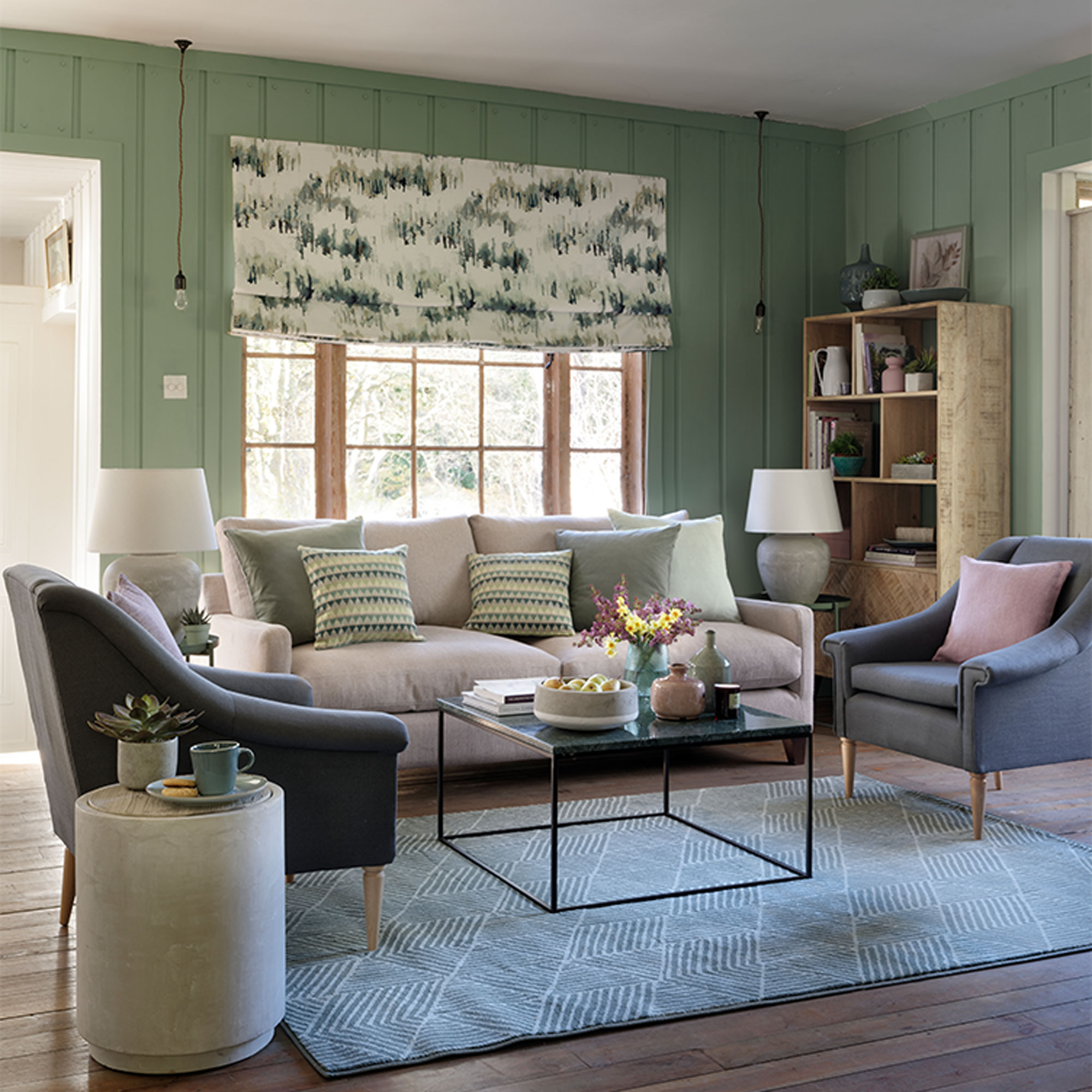
Follow a trick that designers often use for how to arrange furniture in a small living room and instead of pushing living room furniture up against the walls, let it ‘float’ in the centre of the room. Even if it’s just a few inches, pulling sofa and chairs away from walls helps to create breathing space around them, that will actually help with how to make a small living room look bigger.
Having sofa and chairs grouped more-closely together, helps creates a cosy, sociable set-up that will feel more welcoming and inviting than leaving the centre of the room empty. And using an anchor point rug can help tie the decor together in a complementary colour.
11. Work your wall space
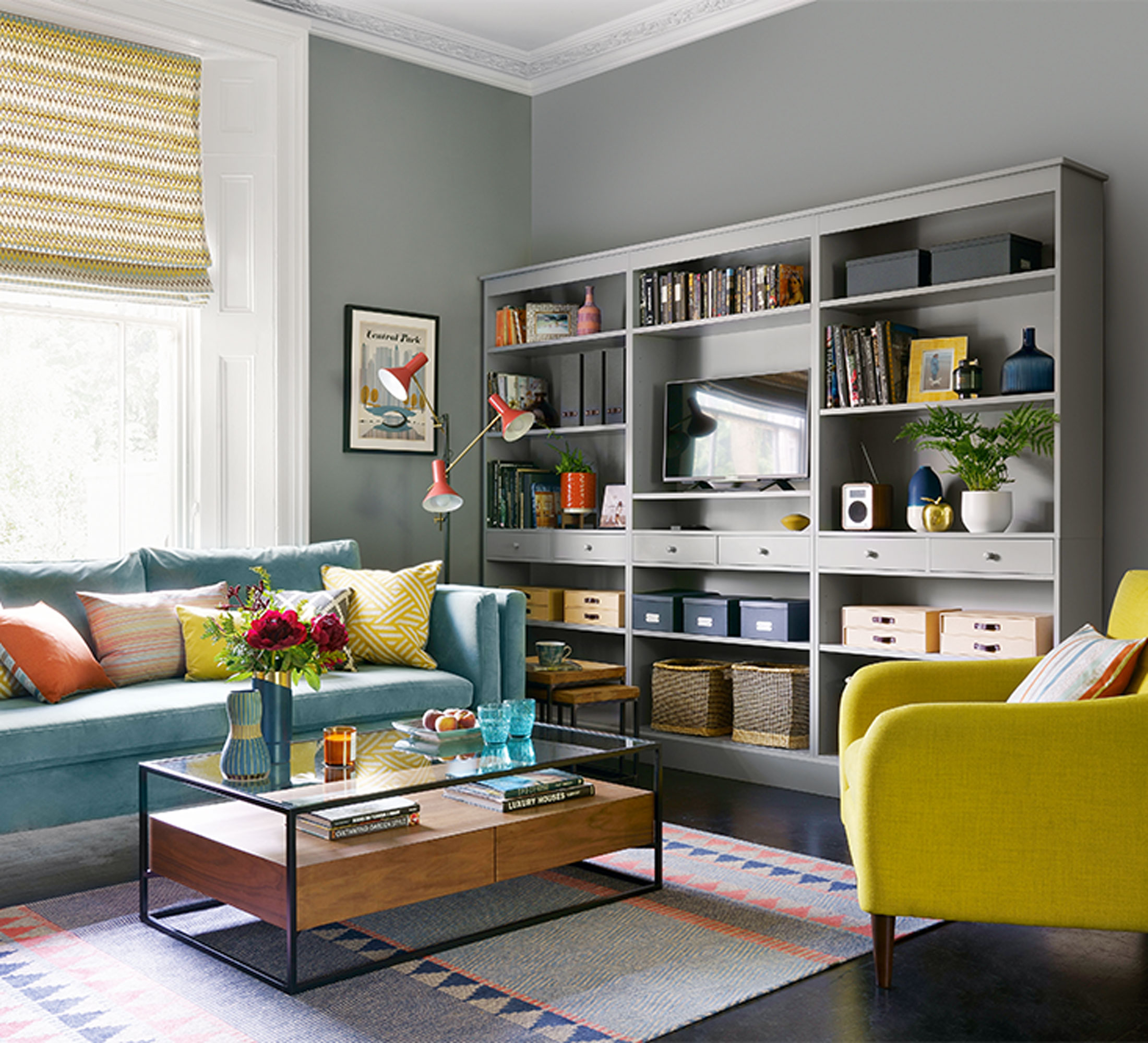
Living room storage ideas are key when it comes to small living rooms, from TV and media kit, to books, games, toys and other essentials. A compact layout can make arranging freestanding furniture a challenge, so why not consider consolidating all the room’s storage and building it into a single piece?
A wall-hugging storage unit that spans the width of a living room will give stacks of storage and free up more floor space than having several individual pieces dotted around the room. And painting storage to match the wall colour will ensure that it blends seamlessly in with the rest of the decor for a 'built-in' look.
Opt for modular storage like these units from The Dormy House, which are built to order ready for assembling at home, and are a less-costly alternative to bespoke built-in furniture.
12. Max out your space with sleek built-ins
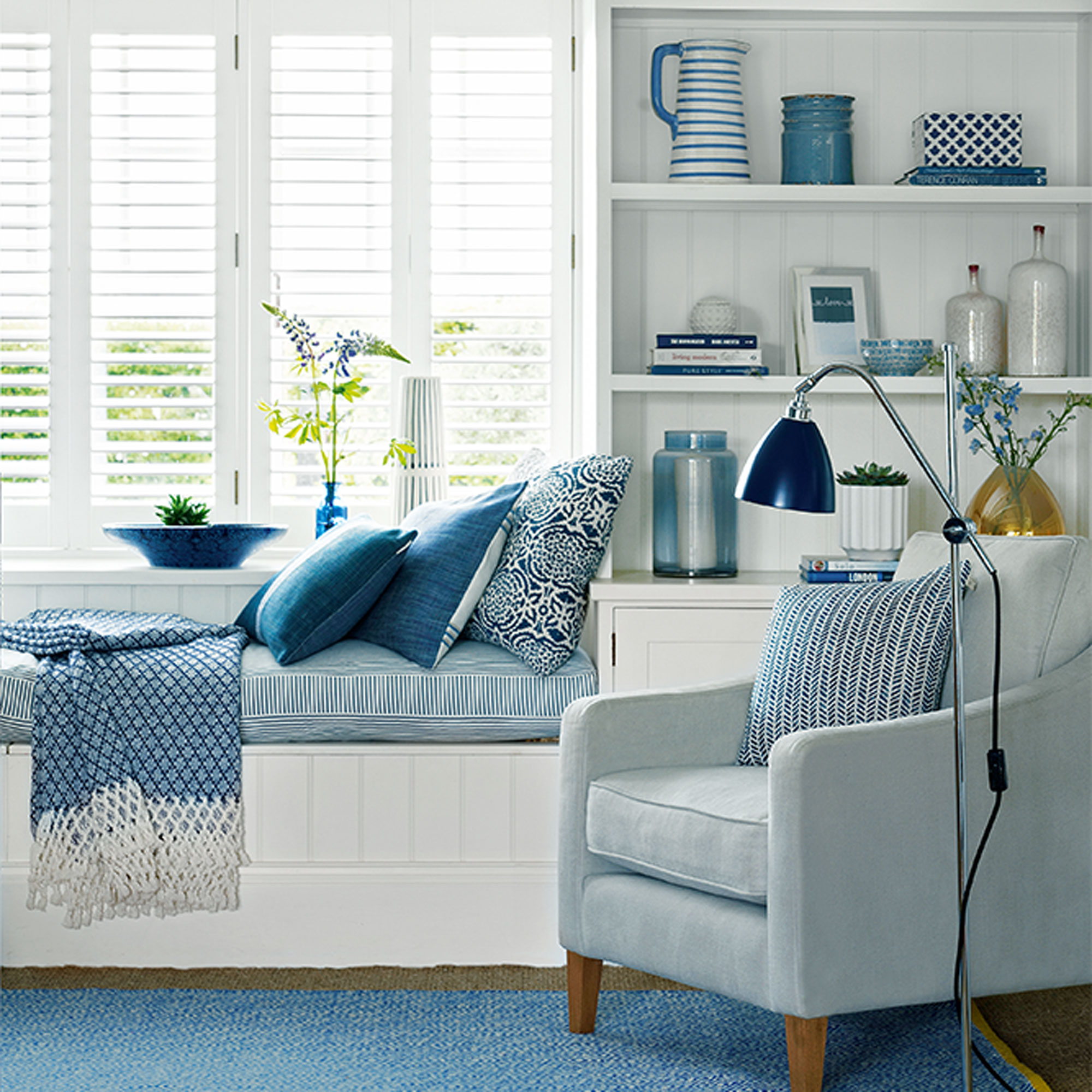
Make full use of every inch to maximise your living room’s layout. Don’t let alcoves, recesses or any awkward nooks and crannies go to waste when planning how to arrange furniture in a small living room. Instead work out ways that you can utilise the space and create built-in storage and hidden extras that will give you more without encroaching on the room’s footprint.
A bay window can be utilised to build-in an extra living room seating idea with hidden storage underneath for stashing cushions, blankets and other living room essentials. If there’s space, extend the build either side by adding floor-to-ceiling bookshelves that will turn the area into a cosy reading nook.
13. Keep the layout simple
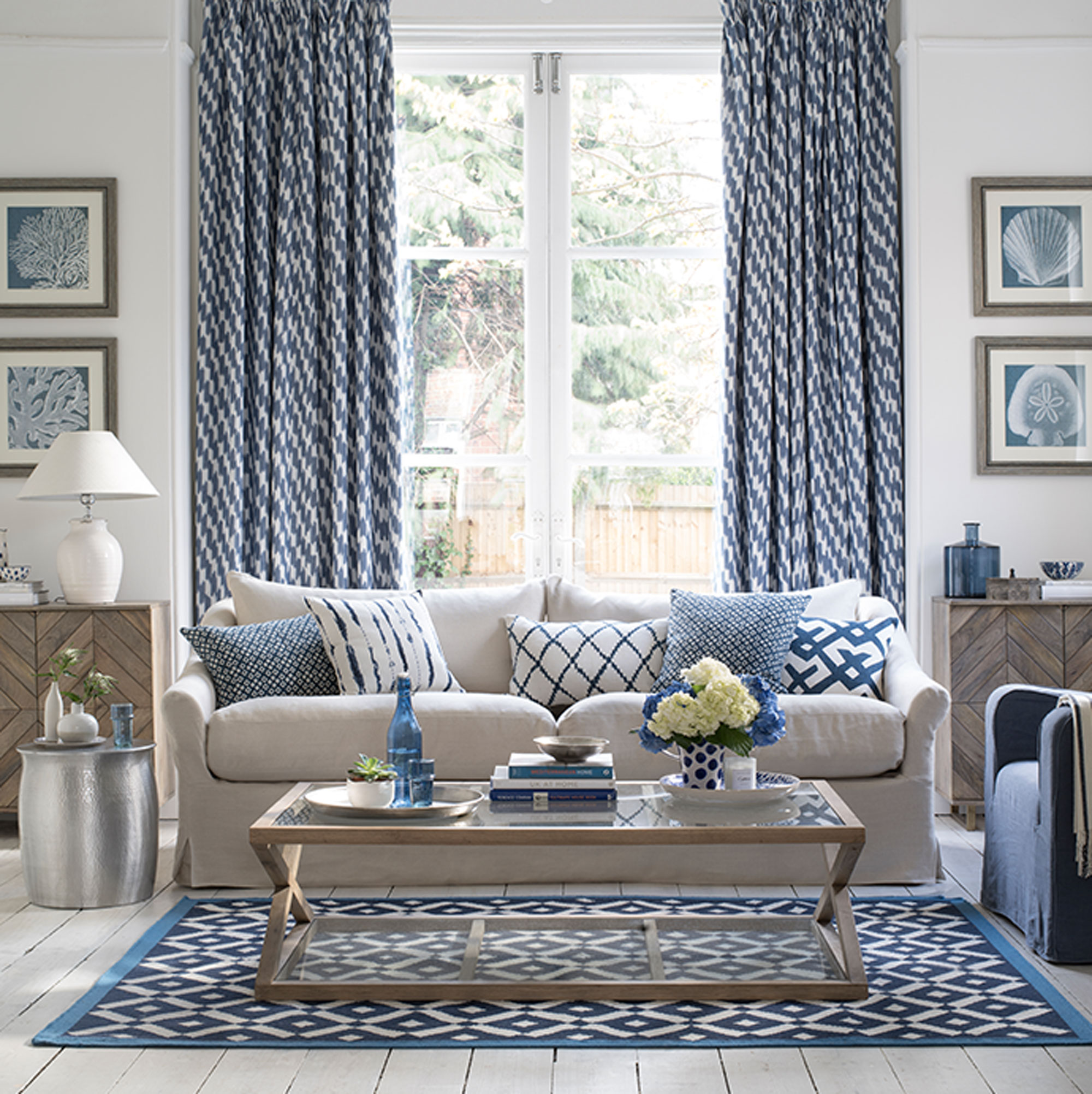
One of the easiest ways of how to arrange furniture in a small living room to make it feel more spacious is to avoid over-filling it and crowding the space. Having one or two pieces of furniture that are the same colour as the walls can also help furniture to blend in better, which will make the room feel bigger too. Glass, clear acrylic and mirror-topped coffee tables will bounce light around instead of blocking it and can help increase the sense of space.
Avoid heavy upholstery and curtain fabrics such as plush velvets, damasks and wool and keep to lighter-weight linens, cottons and sheers instead. And forget fussy details, such as frills, ruffles and flounces, keeping to simple shapes, smooth lines and tailored styling for a streamlined look.
14. Accent your assets
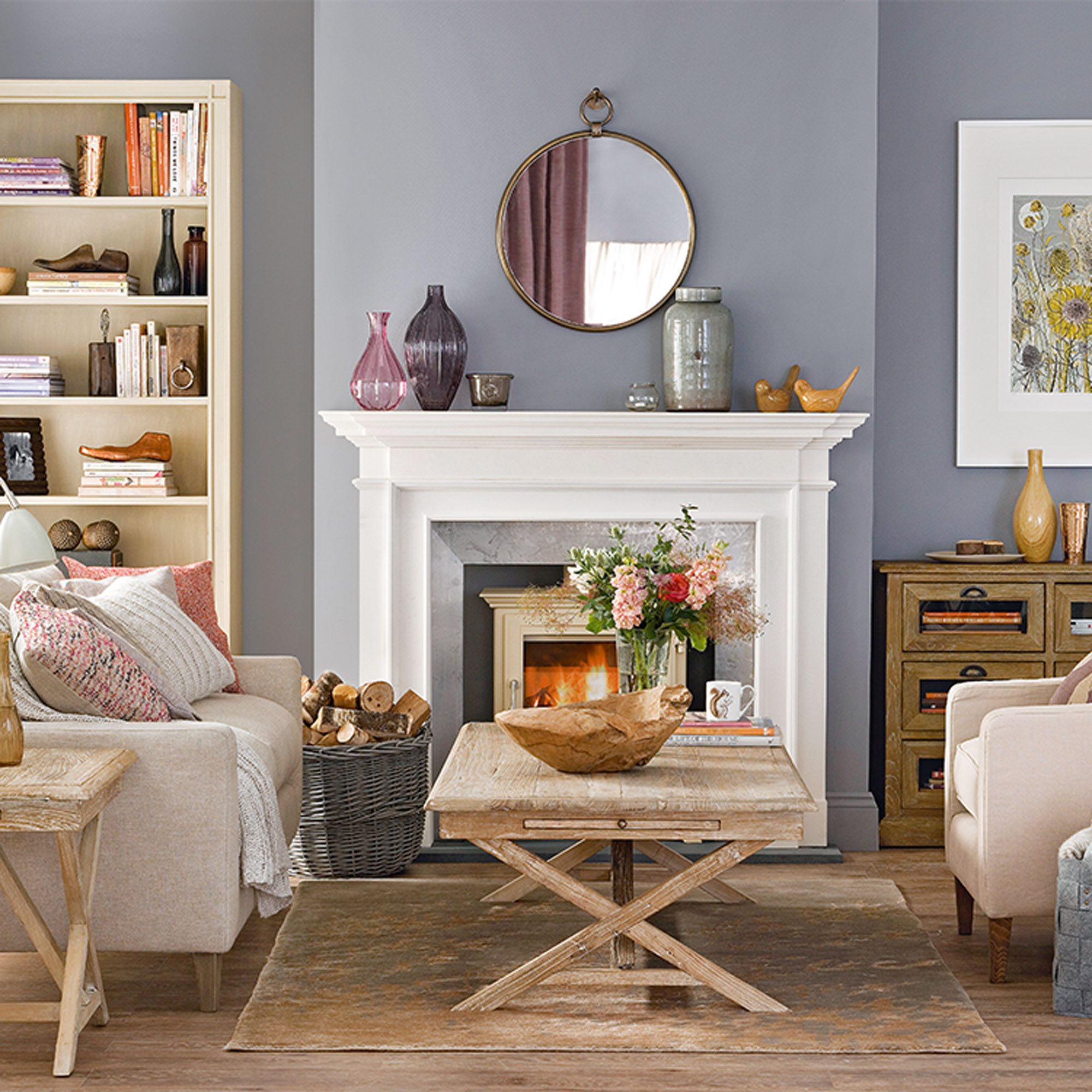
When it comes to how to arrange furniture in a small living room, arrange pieces so that they showcase the space's best features, assets or architectural details. This could be a stunning small living room fireplace idea, picture window with fabulous view or any original decorative details that are worth showing off.
If you have a boxy living room without any redeeming features or original architectural details of its own, then create a focal point yourself. Painting, panelling or wallpapering just one wall can give a small living room new focus, or try adding a picture gallery with a collection of artwork or display of greenery.
15. Get the perfect fit

Using sectional furniture or modular pieces can be a good way of squeezing more seating into a small living room. Bulky sofas and chairs can eat up a lot of floor space and crowd out a small living room, whereas individual units can be configured to work with the room’s layout for a more natural fit.
Corner or L-shaped configurations can work well in a small living room, or try two banks of sectionals positioned across from each other as an alternative layout in a small living space.
FAQs
How can you get the most seating in a small living room?
There are several ways to get the most out of the seating arrangement in your small living room. One way is to choose multifunctional pieces of furniture that can double as extra seating such as a storage ottoman – we particularly like the Dunelm Beatrice Two Tone Woven Stripe Large Storage Footstool. Or there are several sofa ideas and styles optimal for small living rooms.
‘To maximise seating space, corner sofas are a great option as they can be placed against two adjacent walls with plenty of places to sit without needing to accommodate two sofas and unnecessary additional sofa arms,’ says Victoria Foster, interior stylist at ScS. ‘Alternatively, opt for a sofa and a small chair. Accent chairs are a great option as you can get compact, but stylish options.’

How do I arrange two couches in a small living room?
Planning sofas in smaller spaces can be a challenge, however, there are some smart tricks to squeeze in two. If the room is a standard shape, such as a rectangular or square-sized living room, then positioning two same-sized sofas facing each other with a coffee table in between (and set central to the room’s focal point) can make a good fit. With how to arrange furniture in a small living room, always make sure that there is enough breathing space around furniture, so that people go around and not through the conversation area.
There’s no hard and fast rule that says you can’t pair different sized pieces of furniture, such as a three-seater and a two-seater, or a long sofa with a cuddler seat. Varying sizes can create a different dynamic and solve the problem of furniture arrangement if the room has a challenging or awkwardly-shaped layout.
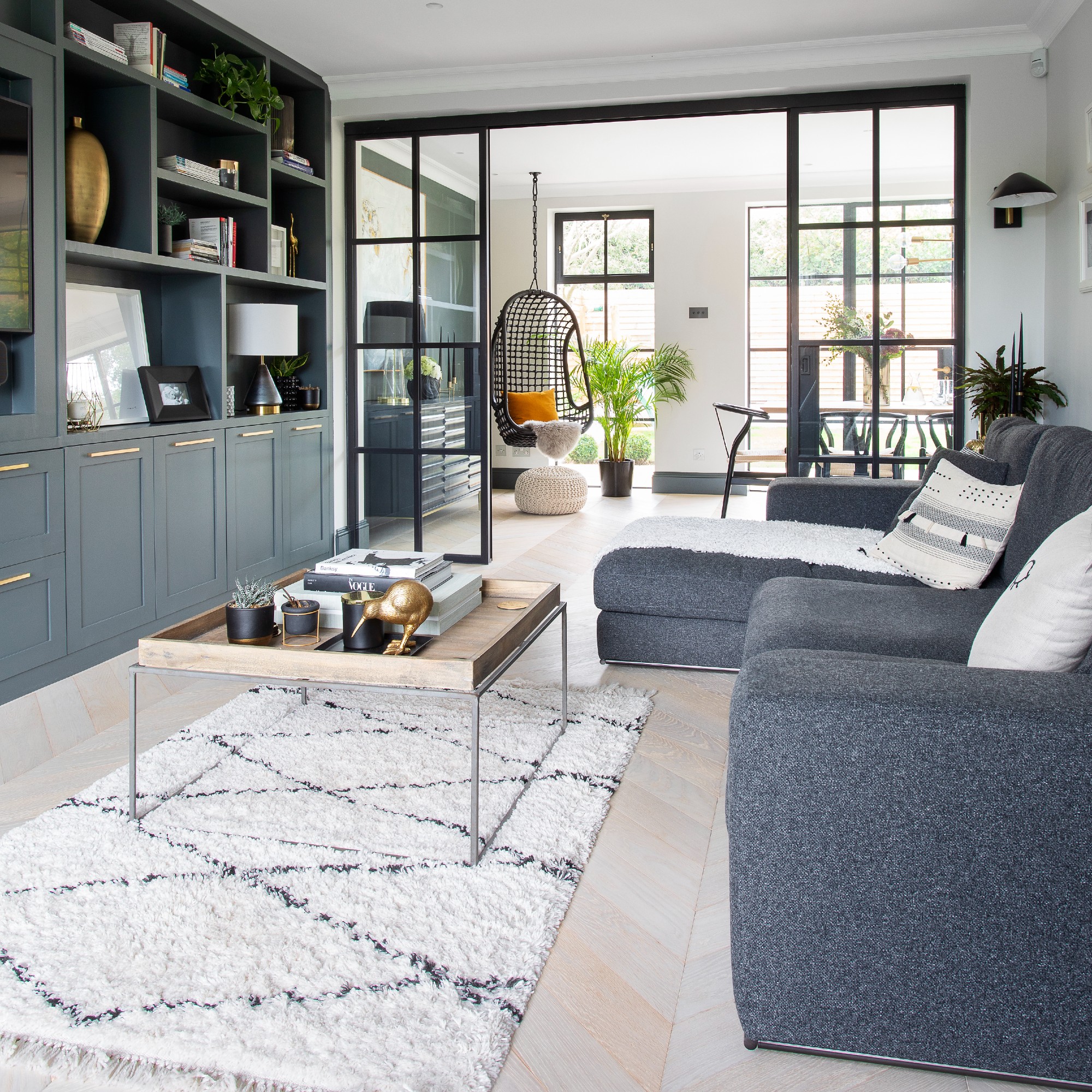
Where do you put the TV in a narrow living room?
When deciding how to arrange furniture in a small living room, one issue that often crops up is where to place the TV. For an optimum viewing position, small living room TV ideas should ideally be placed central to the sofa. If this ruins the aesthetic or just isn’t possible in a small living room, then positioned to one side can work well too, such as in an alcove to one side of a fireplace.
The TV should be at the correct height in relation to the sofa so that it is feels comfortable to view and you don’t have to look upwards or crane your neck to watch it.
Just make the most of every corner and take advantage of every nook to truly enjoy your living room’s full potential.







